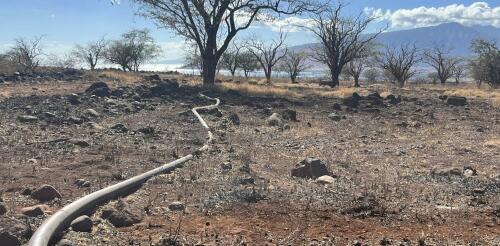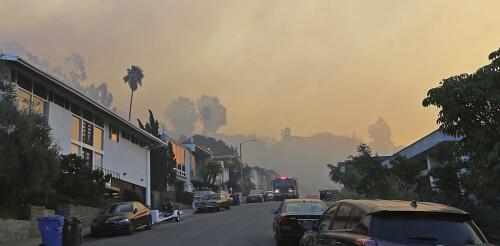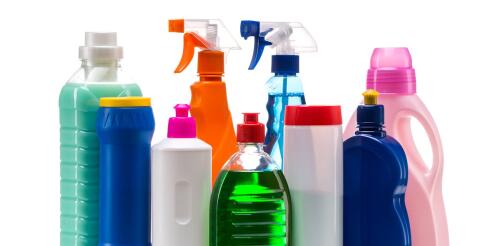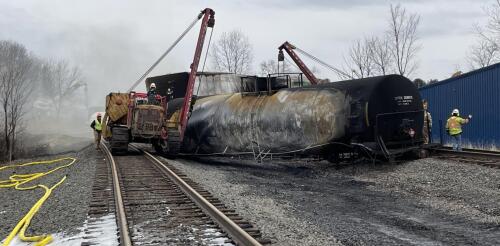Volatile organic compounds (VOCs)
The wildfires that burned across Maui, Hawaii, in August 2023 became the deadliest conflagration in the United States in more than a century. While the harm to homes and tourism drew the most attention, agriculture was also heavily affected across the island, and the harm did not stop once the flames were out. In some cases, fires smoldered underground for weeks. Water systems were destroyed, and some were contaminated in ways scientists are only beginning to understand. Two weeks after the Maui fires began, they were still smoldering below ground. Andrew Whelton/Purdue University, CC BY-ND As an environmental engineer, I work with communities affected by wildfires and other disasters. I also led a team of university and public works professionals to assist in Maui’s response to the fires. In a new study based on that effort, my team worked with the Hawaii Department of Agriculture to assess d...
Have you ever wondered about that sharp, green note that hits your nose when you mow the lawn or cut flower stems? Those are green leaf volatiles, or GLVs: easily evaporated oils that plants use to communicate with other plants and defend themselves against herbivores or pathogens like bacteria or fungi. Almost every green plant can quickly synthesize and release GLVs when attacked, both directly warding off attackers as well as indirectly attracting predators of herbivores like insects and priming the plant’s other defense mechanisms. Researchers know that GLVs play an important role in protecting plants, but how they work remains unclear. I am a biochemistry researcher, and through a collaboration between the Wang Lab and Stratmann Lab of the University of South Carolina, my colleagues and I study how plant cells deploy green leaf volatiles. In our recently published research, we identified the potential signaling pathways GLVs use to induce defense responses in tomato c...
When wildfire smoke turns the air brown and hazy, you might think about heading indoors with the windows closed, running an air purifier or even wearing a mask. These are all good strategies to reduce exposure to the particles in wildfire smoke, but smoky air is also filled with potentially harmful gases. Those gases can get into buildings and remain in the walls and floors for weeks. Getting rid of these gases isn’t as simple as turning on an air purifier or opening a window on a clear day. In a new study published in the journal Science Advances, colleagues and I tracked the life of these gases in a home exposed to wildfire smoke. We also found that the best way to get rid of the risk is among the simplest: start cleaning. The challenge of smoke particles and gases In December 2021, several of my friends and colleagues were affected by the Marshall Fire that burned about 1,000 homes in Boulder County, Colorado. The “lucky” ones, whose homes were still stand...
The Research Brief is a short take about interesting academic work. The big idea Consumer products released more than 5,000 tons of chemicals in 2020 inside California homes and workplaces that are known to cause cancer, adversely affect sexual function and fertility in adults or harm developing fetuses, according to our newly published study. We found that many household products like shampoos, body lotions, cleaners and mothballs release toxic volatile organic compounds, or VOCs, into indoor air. In addition, we identified toxic VOCs that are prevalent in products heavily used by workers on the job, such as cleaning fluids, adhesives, paint removers and nail polish. However, gaps in laws that govern ingredient disclosure mean that neither consumers nor workers generally know what is in the products they use. For this study we analyzed data from the California Air Resources Board (CARB), which tracks VOCs released from consumer products in an effort to reduce smog. The agen...
Headaches and lingering chemical smells from a fiery train derailment in East Palestine, Ohio, have left residents worried about their air and water – and misinformation on social media hasn’t helped. State officials offered more details of the cleanup process and a timeline of the environmental disaster during a news conference on Feb. 14, 2023. Nearly a dozen cars carrying chemicals, including vinyl chloride, a carcinogen, derailed on the evening of Feb. 3, and fire from the site sent up acrid black smoke. Officials said they had tested over 400 nearby homes for contamination and were tracking a plume of spilled chemicals that had killed 3,500 fish in streams and reached the Ohio River. However, the slow release of information after the derailment has left many questions unanswered about the risks and longer-term impact. We put five questions about the chemical releases to Andrew Whelton, an environmental engineer who investigates chemical risks during disasters....




